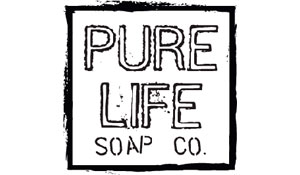
Soaps have been made for millennia. Aside from making fire and cooking food, "saponifying" oil and fat into soap is one of the oldest and simplest chemical reactions known to humankind. In fact, the first soaps were accidentally made by fat dripping into the ashes of cooking fires.
Soap is made by saponifying a fat or oil with an alkali. A fat or oil is a "triglyceride," which means that three fatty acids of various carbon lengths are attached to a glycerine backbone. The alkali is either sodium (for bars) or potassium (for liquids) hydroxide, made by running
The saponification process is a simple one-step reaction with no waste generated: the glycerine is split off from the fatty acids, and the fatty acids combine with the sodium or potassium to form soap, while the hydroxide forms water. The result is soap, glycerin and water (no alkali remains in our soaps).
Quality soap-making consists in great part of choosing the right proportions of the right oils with their different fatty acids. Most commercial soap manufacturers skimp on quality because of cost and use lots of tallow from beef fat with a little bit of coconut or palm kernel oil.
Dr. Bronner's unsurpassed soaps are made with certified organic olive, hemp and palm oils instead of tallow, and contain three times more
| Other Ways Dr. Bronner's Makes Higher-Quality Soap |
 Stop in at Get Healthy to check out our various GOOD FOR YOUR BODY soaps, lotions and hair care by brands such as Dr. Bronner's and Pure Life... currently at a 40% discounted rate!   |

No comments:
Post a Comment